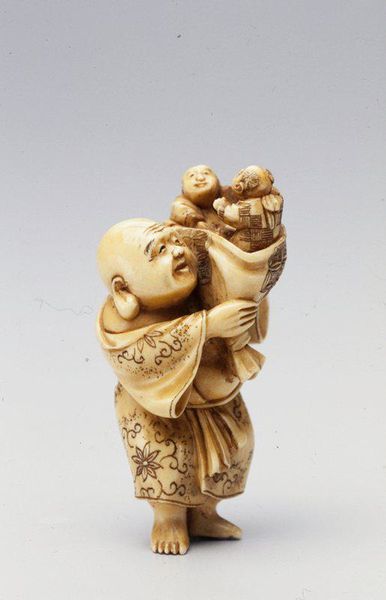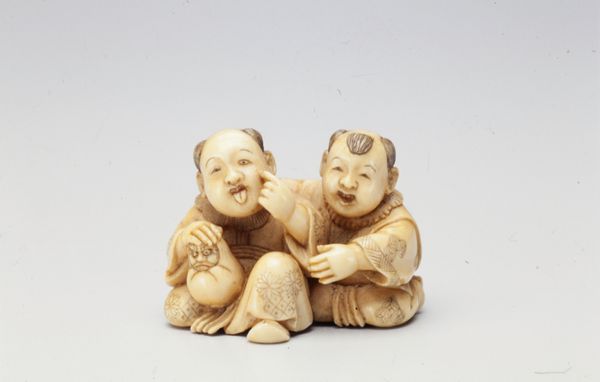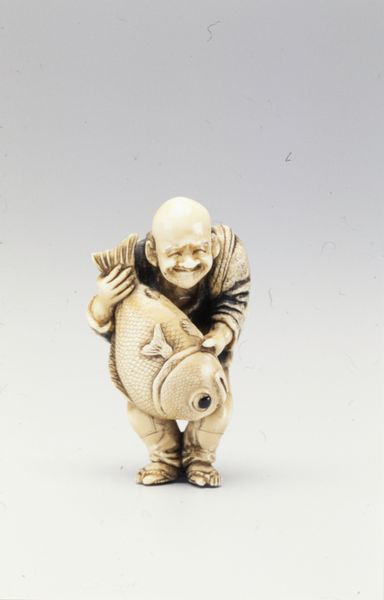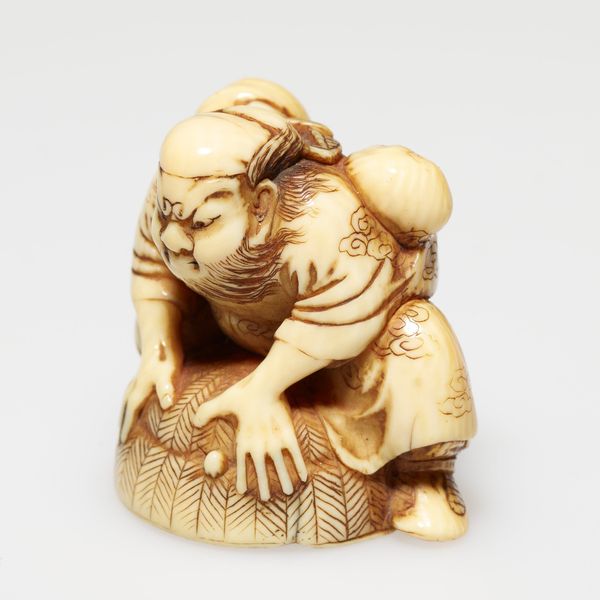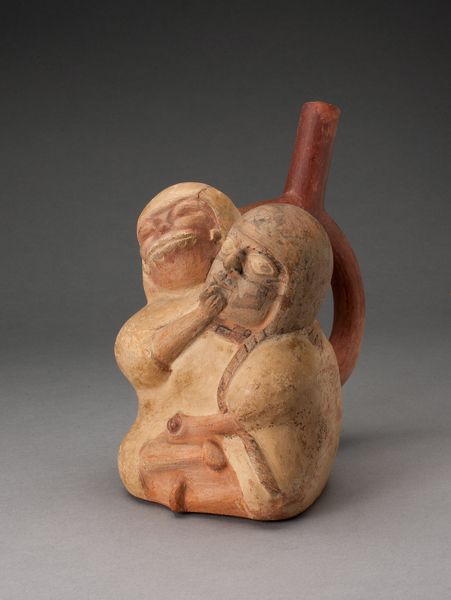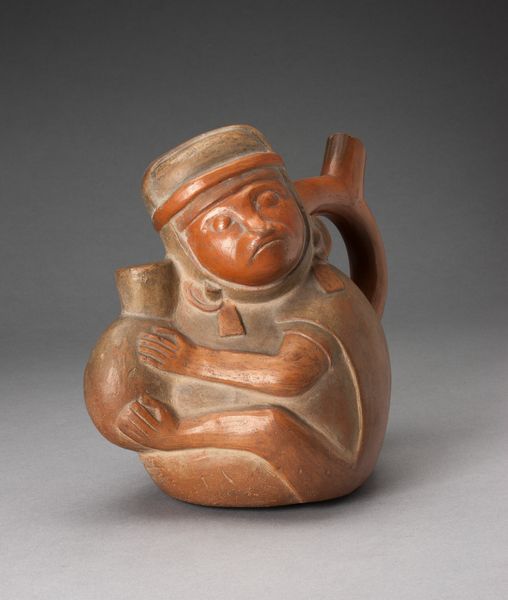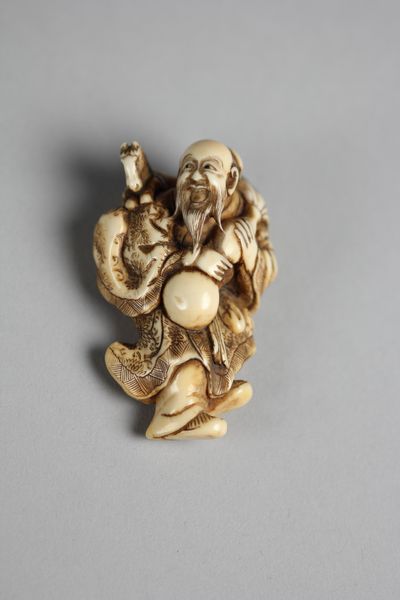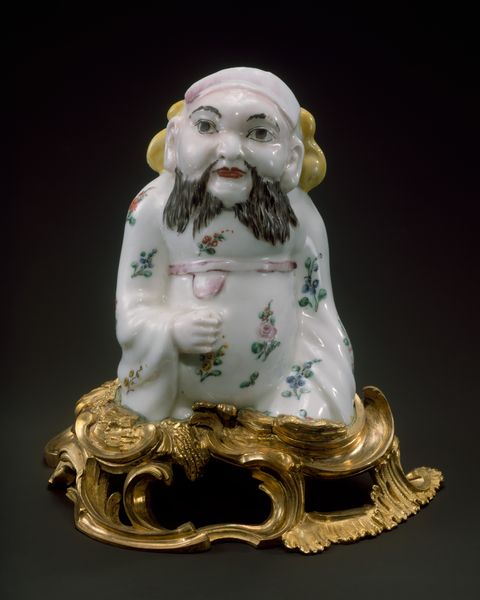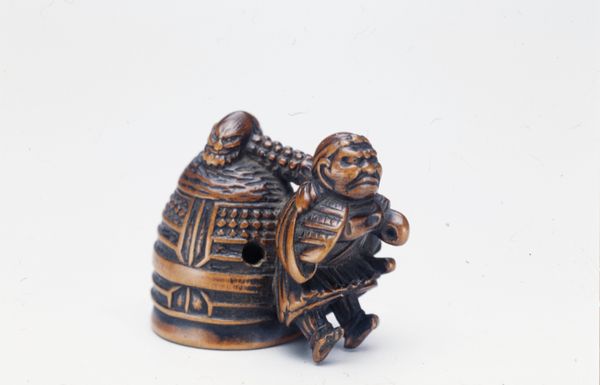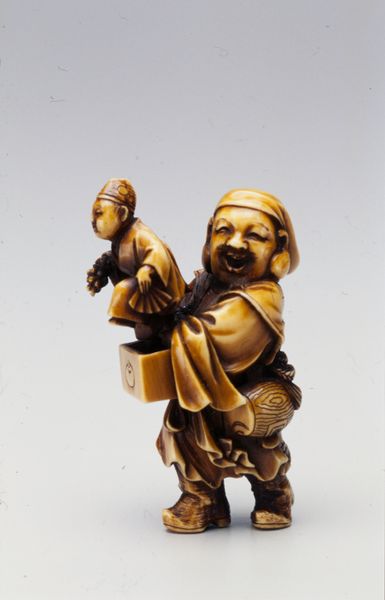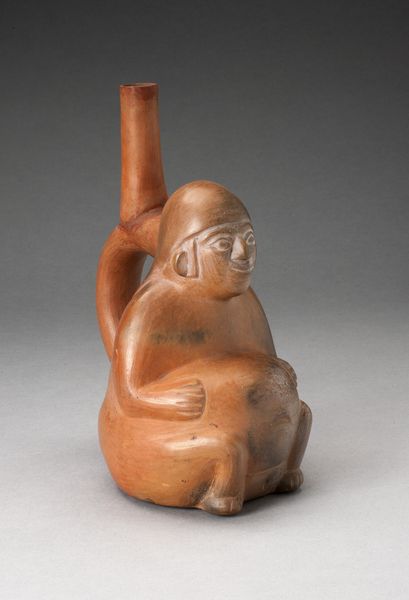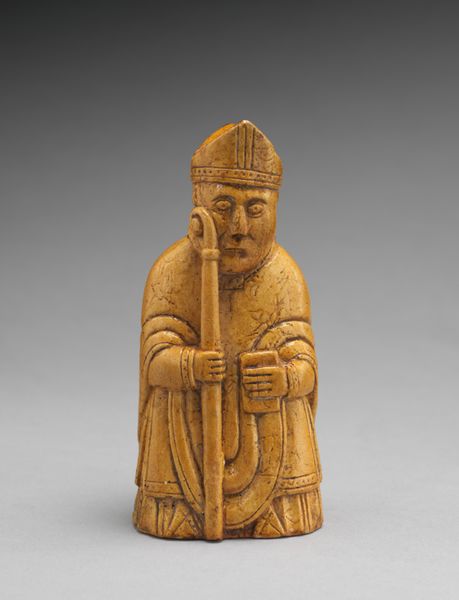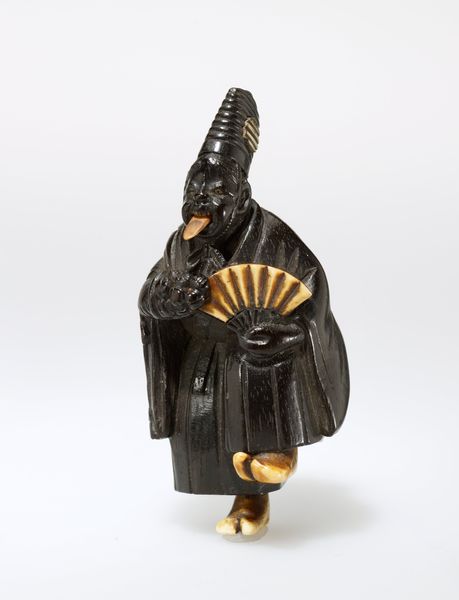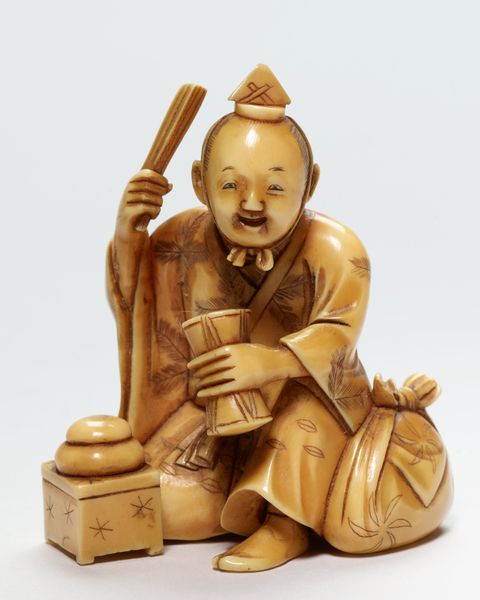
sculpture, ivory
#
portrait
#
sculpture
#
asian-art
#
figuration
#
sculpture
#
ivory
Dimensions: 1 7/16 x 1 9/16 x 1in. (3.7 x 4 x 2.5cm)
Copyright: Public Domain
Editor: Right now, we’re looking at a delightful ivory sculpture titled "Mother and Son with Tengu Mask" by Chounsai, dating back to the 19th century. It's currently housed at the Minneapolis Institute of Art. It’s such an intimate, everyday scene carved from, what, a relatively rare material. What strikes you most about this piece? Curator: Considering this ivory sculpture from a materialist perspective reveals so much. The very choice of ivory speaks volumes about consumption. The extraction and trade of ivory are rooted in colonial exploitations and the commodification of nature. How might this knowledge reshape your initial viewing experience? Editor: It does cast a different light on it. Before, it seemed like just a charming depiction of motherhood, but now, knowing the material, it makes me question the societal structures that allowed for such a piece to be created in the first place. Did ivory carving, like this, have a specific role within those structures? Curator: Precisely. The netsuke tradition— these small, functional toggles that often became decorative objects—developed in tandem with rising merchant classes and consumer economies in Edo-period Japan. The artist’s labor itself is a key part of the narrative, wouldn’t you agree? Think of the skill and time involved. How might the value we assign to "art" be challenged when we focus on the labor and the materiality of pieces such as this one? Editor: That’s fascinating. The artist, their skill, and the exotic material are all wrapped up in class and trade and consumption. So it's more than just a cute mother and child. Curator: Exactly. The materiality and means of production offer profound insights into broader social and historical conditions that transcend simple aesthetics. Editor: Thanks! I see it quite differently now. Curator: And hopefully understand better that the 'everyday scene' also speaks to exploitation.
Comments
No comments
Be the first to comment and join the conversation on the ultimate creative platform.
